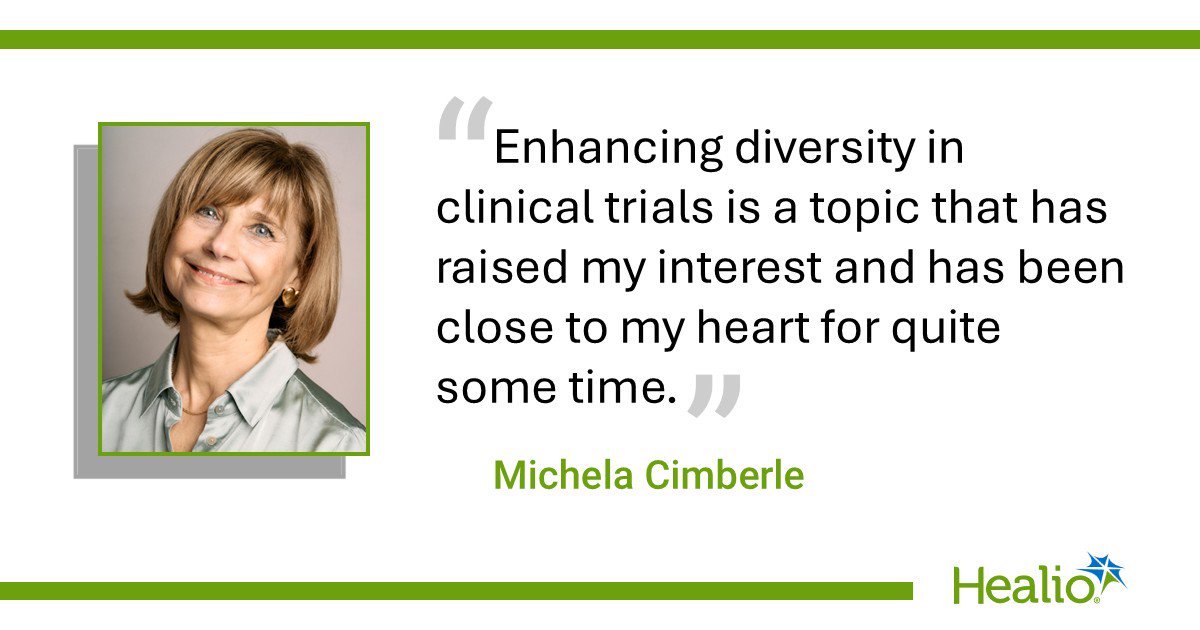August 06, 2025
6 min read
Key takeaways:
- People with new-onset diabetes had a nearly fivefold higher risk for pancreatic cancer within 3 years.
- Diabetes developed an average of 8 months before clinical pancreatic cancer diagnosis.
A large prospective study validated a long-suspected association between diabetes and pancreatic cancer.
Individuals with glycemically-defined new-onset diabetes exhibited a nearly fivefold higher risk for pancreatic cancer within the next 3 years than what would be expected in the general population, an interim analysis from the REGARD study showed.

Risks varied considerably by race or ethnicity.

Suresh T. Chari
“We published our first paper on this topic in 2005, and it took us 20 years to prove it prospectively. That is a major milestone,” Suresh T. Chari, MD, professor in the department of gastroenterology, hepatology and nutrition at The University of Texas MD Anderson Cancer Center, told Healio.
“There are still questions about what we will be able to do with this knowledge,” Chari added. “This is not the end. This is the beginning. But we have had no strategy for early detection of pancreatic cancer, and at least now we know we have something that might move us closer to that goal.”
‘A major gap’
Pancreatic cancer is projected to surpass colorectal cancer as the second the leading cause of cancer mortality in the United States by 2030.
About 13% of all people with pancreatic cancer — and only 3% of those with distant disease — survive 5 years, according to American Cancer Society statistics.
Because those with early disease often have no symptoms, about 80% of pancreatic cancers are diagnosed at advanced stages when surgery is not possible and other treatment options are limited.
“Early detection of cancer in general has been about finding cancer close to its inception, when it turns from hyperplasia to cancer,” Chari said. “That has been almost impossible in pancreatic cancer.”
The two exceptions — individuals who have a family history and those with a cyst on the pancreas — account for only 10% to 15% of pancreatic cancers.
“In the other 85% of cases, there is nothing visible on imaging and we have no clue whether they’re going to develop cancer,” Chari said. “With median survival for advanced disease being 6 to 7 months, this leaves a major gap in our ability to make a difference. Our only hope is to reduce the number of advanced-stage cases.”
An early signal
Prior retrospective studies suggested new-onset diabetes may be a potential early indicator of pancreatic cancer, which can cause progressive hyperglycemia years prior to diagnosis.
Chari has studied this association since the late 1990s.
During his time at Mayo Clinic, he and colleagues reviewed data from a population-based cohort of more than 2,000 adults aged 50 years or older who met criteria for glycemic-criteria diabetes.
They determined 0.85% of those individuals developed pancreatic cancer within 3 years of meeting diabetes criteria — a rate six to eight times higher than would be expected in the general population.
More than 15 years later, Kenner and colleagues reviewed the available literature on early detection of pancreatic cancer. Their analysis revealed adults with new-onset diabetes had a six- to 10-fold higher risk for pancreatic cancer, comparable to the increased risk for lung cancer observed among individuals with a 20 pack-year smoking history.
Chari and colleagues conducted the REGARD study to try to prospectively validate the association between new-onset diabetes and pancreatic cancer.
The definition of “new-onset diabetes” in prior studies varied considerably, and diagnosis by a physician may not happen until months — in some cases years — after glycemic onset, according to study background.
Chari and colleagues aimed to identify diabetes at first glycemic onset based on A1c and fasting plasma glucose test results. This allowed glycemic parameters to serve as predictors of pancreatic risk regardless of their role in clinical diagnosis of diabetes.
The analysis included adults aged older than 50 years with confirmed lack of prior diabetes who had been receiving care at one of four large integrated health care systems — Kaiser Permanente Southern California, Kaiser Permanente Northern California, Baylor College of Medicine/Kelsey-Seybold Clinic, and Mayo Clinic Minnesota.
The researchers performed systematic and algorithm-based active real-time surveillance of electronic health records. They identified 18,838 adults who had new-onset diabetes based on glycemic criteria.
Non-Hispanic white (34.6%; n = 6,518) and Hispanic individuals (31.7%; n = 5,984) accounted for about two-thirds of the study sample. The cohort also included 3,360 Asian/Pacific Islander individuals (17.8%) and 2,192 African American individuals (11.6%).
Investigators followed patients through electronic records for diagnosis of pancreatic cancer, with no attempt to detect pancreatic cancer early.
The median follow-up for the interim analysis reached 2.3 years.
During that time, 82 pancreatic cancers had been diagnosed (mean age at diagnosis, 71 years; 60% men). As expected, a majority (65%; n = 53) were diagnosed at stage IV, Chari said.
Results showed overall race-adjusted 3-year pancreatic cancer incidence of 0.62% (95% CI, 0.47%-0.76%), with higher absolute 3-year incidence among non-Hispanic white individuals (0.84%) than Hispanic (0.4%), African American (0.37%) or Asian/Pacific Islander individuals (0.22%).
The researchers calculated the following standardized incidence ratios for pancreatic cancer based on race or ethnicity:
- Overall cohort: 4.6 (95% CI, 3.7-5.7)
- Non-Hispanic white: 6.4 (95% CI, 4.8-8.4)
- Hispanic: 4.2 (95% CI, 2.6-6.3)
- African American: 2.4 (95% CI, 1-5)
- Asian/Pacific Islander: 3 (95% CI, 1.4-6)
New-onset diabetes occurred an average of 8 months prior to clinical pancreatic cancer diagnosis, and nearly 40% of cancers were diagnosed a year or longer after new-onset diabetes.
“That provides tremendous lead time,” Chari said. “We have a considerable amount of data showing how rapidly a person with pancreatic cancer declines. Some people who were fully functional 5 months earlier — with normal CT scans — are in a wheelchair when they are diagnosed. This strategy could allow us to leapfrog that period of rapid disease acceleration.”
The clinical community’s understanding of the connection between new-onset diabetes and pancreatic cancer is “not where it needs to be,” Chari said.
“A bigger issue that plagues our field is this mentality of, ‘You’re going to detect it 8 months earlier. So what?’” Chari added. “I’m saying, ‘Give us a chance.’ We believe 8 months is going to make a huge difference.”
To maximize the opportunity for earlier intervention, the time between identification of new-onset diabetes and imaging should not exceed 2 weeks, Chari said, noting this will require “institutional buy-in.”
It also will be important to overcome another concern.
“Some people say, ‘You’re going to scare everyone in the world with diabetes about pancreatic cancer,’” Chari said. “Our intention is for this to be a one-time work-up. If a person with rectal bleeding is referred for a colonoscopy and it’s negative, they’re not scared about colon cancer for life, so I think we’ll be able to mitigate that concern.”
‘On the verge of progress’
Chari and colleagues intend to follow members of the REGARD cohort for up to 5 years to assess longer-term risks. They hypothesize that risk for pancreatic cancer will level off 3 years after new-onset diabetes and mirror the risk typically observed among people with established diabetes — approximately double that of the general population.
Other research efforts could expand the impact of the REGARD study’s findings.
A prospective study is ongoing to evaluate the validity of the ENDPAC score, which classifies people with new-onset diabetes into three risk categories — low, intermediate or high — based on body weight, age and glucose/HbA1c values. Data from an interim analysis are anticipated in the next year.
Chari is working with investigators at Mayo Clinic on another prospective study of AI-assisted CT scans, which have demonstrated the potential to increase the proportion of pancreatic cancers detected in earlier stages. Preliminary findings published in 2023 showed the approach can identify hidden cancers in pre-diagnostic scans more than a year before clinical diagnosis.
“I think we’re on the verge of progress,” Chari said. “If AI-assisted CT works in the prospective study, we’ll have another piece of the strategy in place. Then we’ll have the opportunity to evaluate whether what we’re trying to do actually results in stage-shifting, helps more patients get to surgery and ultimately improves survival.”
References:
For more information:
Suresh T. Chari, MD, can be reached at stchari@mdanderson.org.









